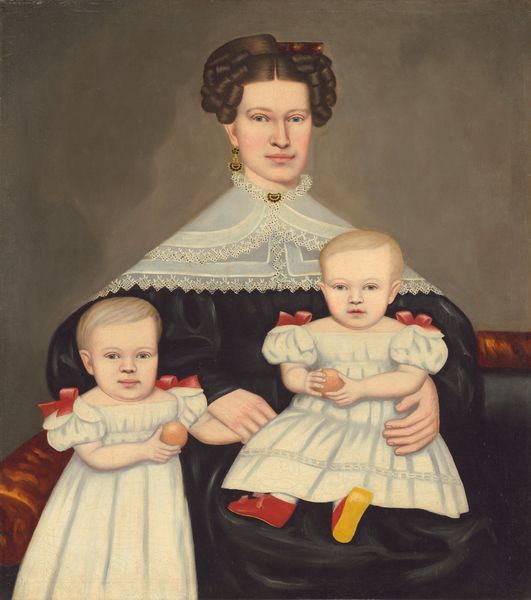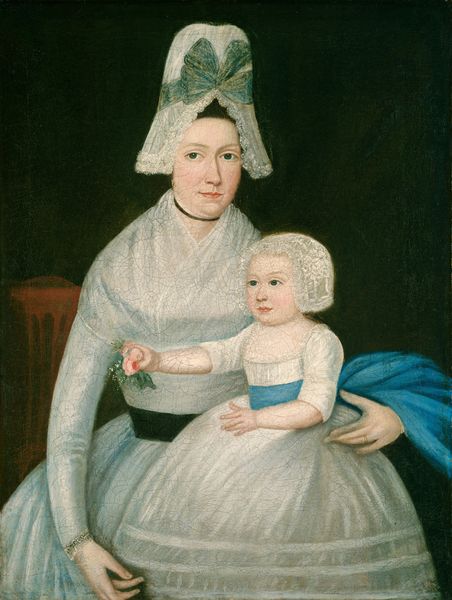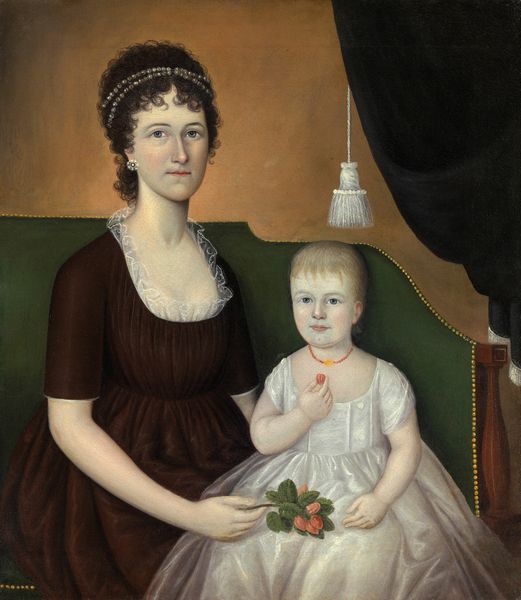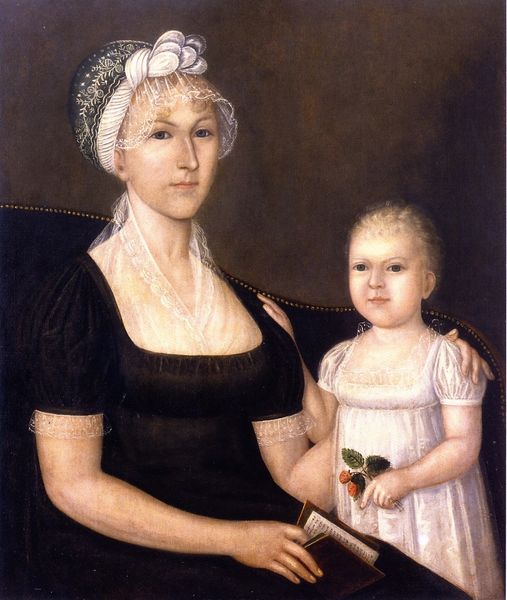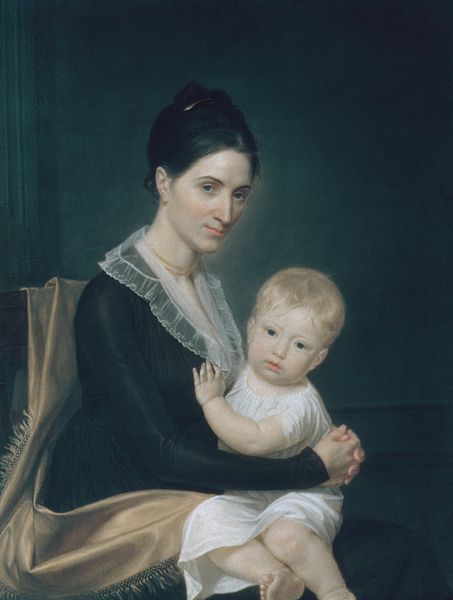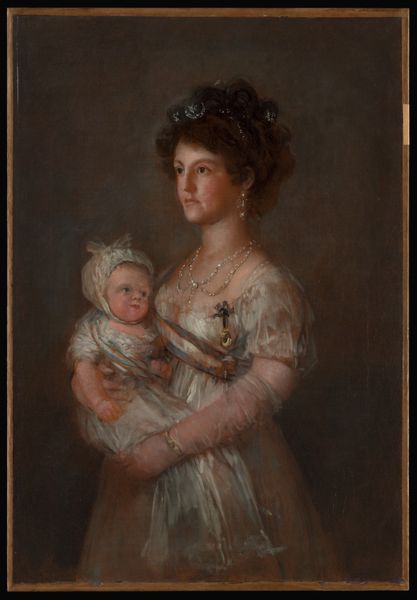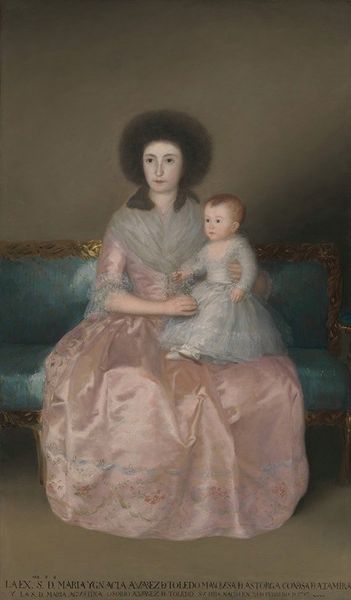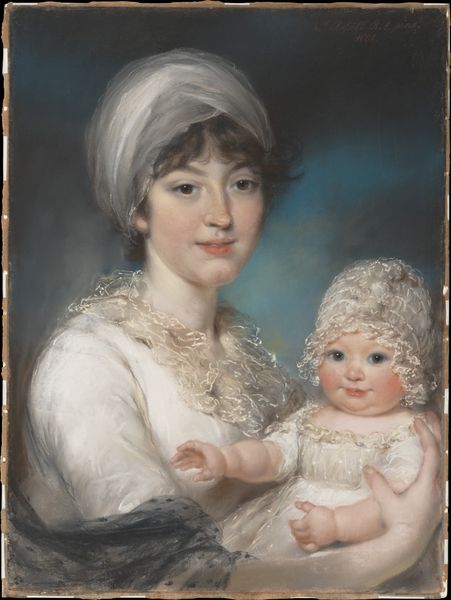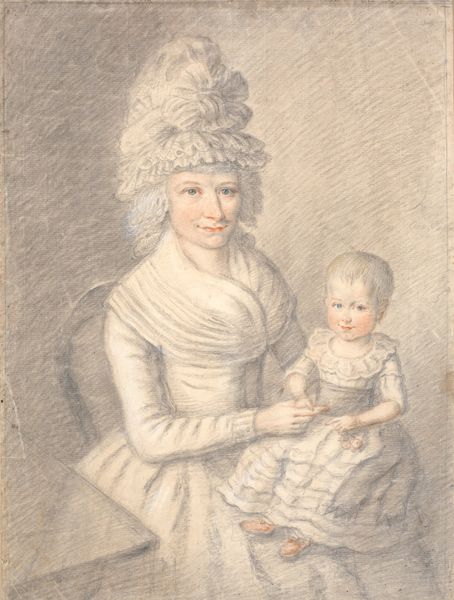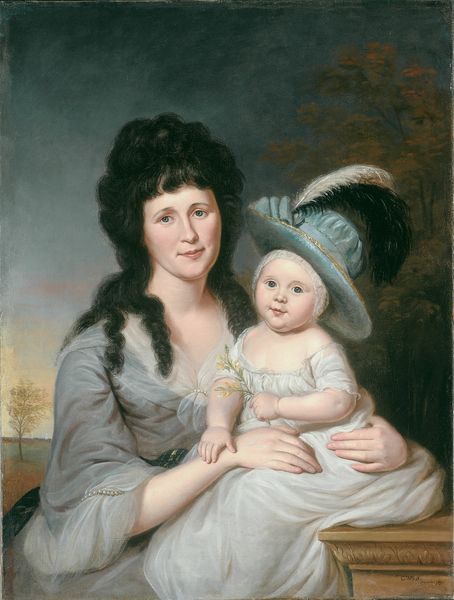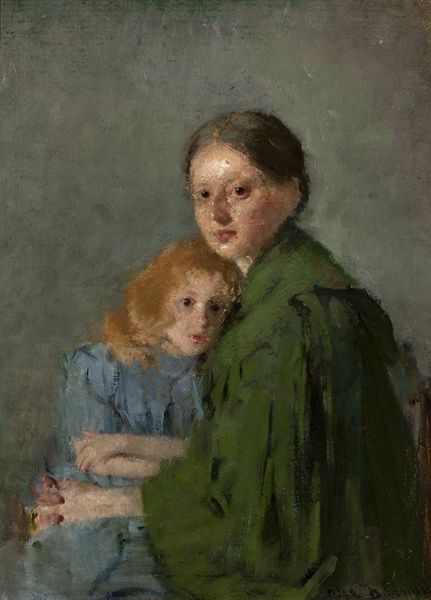
painting, oil-paint
#
painting
#
oil-paint
#
oil painting
#
classicism
#
genre-painting
#
academic-art
Dimensions: overall: 76.2 x 63.2 cm (30 x 24 7/8 in.)
Copyright: National Gallery of Art: CC0 1.0
Curator: Here we have "Mrs. John Harrisson and Daughter", an oil painting dating from around 1823 by Frederick W. Mayhew. There’s something so captivating about its simplicity, isn't there? Editor: Absolutely, my first impression is of the understated materiality. It feels restrained in its palette, almost monochrome. The visible brushstrokes, especially in the background, speak volumes about its making. Curator: Yes, and I think it offers a poignant insight into early 19th-century American womanhood. Look at the careful depiction of the clothing—the bonnet, the ruff—signifying status but also confinement within societal expectations. It’s as much a portrait of a mother as it is a reflection on gender roles. Editor: Agreed. The texture of that lace ruff, rendered with such precision in oil paint, highlights the time and skill dedicated to these crafts. The gold ring she wears speaks to the material circumstances afforded by her position, and that detail focuses on the artist as maker. The choice of oil, the layering—it’s all integral to the final representation and to understanding the artwork’s function in her time. Curator: I find myself particularly drawn to the slightly detached gazes of both mother and child. It suggests a complex internal life beyond their roles as mother and daughter. The portrait challenges us to consider their individual identities and stories within the limited scope offered to women of that era. Did they commission it, and thus influence their portrayal? How were women being visualized at this historical juncture? Editor: Right, thinking about its contemporary value, the social context of display becomes critical. Who got to see this? Whose domestic space did it inhabit? These kinds of pieces really force us to question our ideas about high and low art by recognizing its materiality, process and audience. Curator: It reminds us of the layers of meaning embedded in even the seemingly simplest portraits. It's not just an image, but an archive of social relations and values. Editor: Indeed. Studying such works challenges us to reconsider both art history and the broader material circumstances. Curator: And from that perspective, what appears unassuming can resonate with potent political commentary. Editor: Precisely, illuminating both the hand that crafted the oil paint, as well as her social place at this historical moment.
Comments
No comments
Be the first to comment and join the conversation on the ultimate creative platform.
